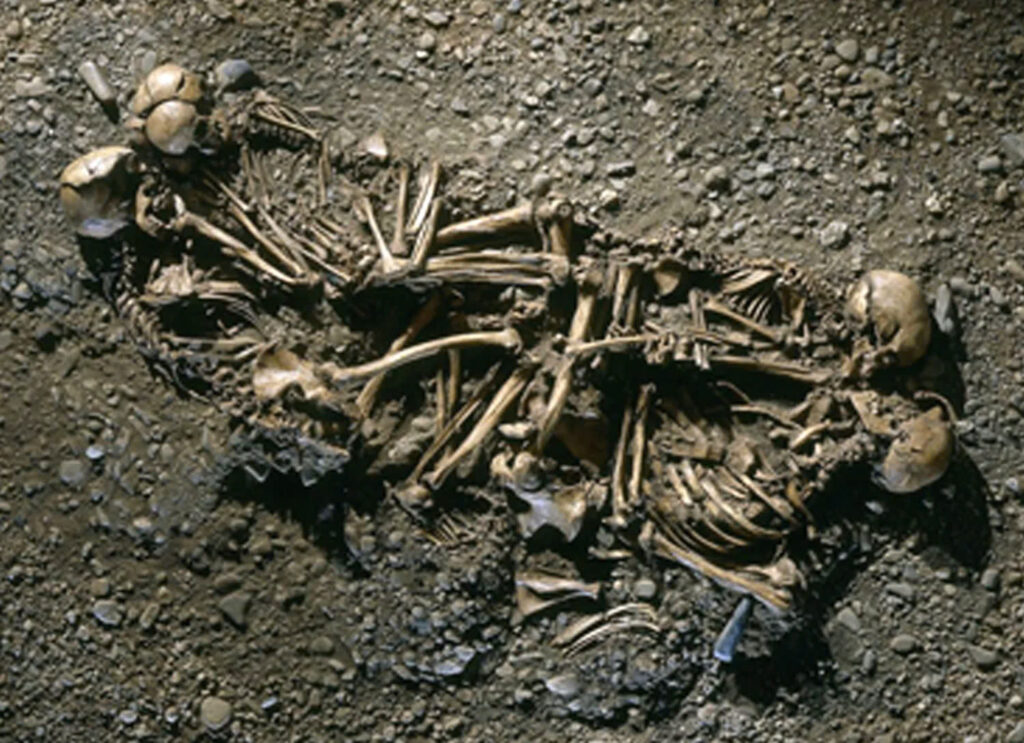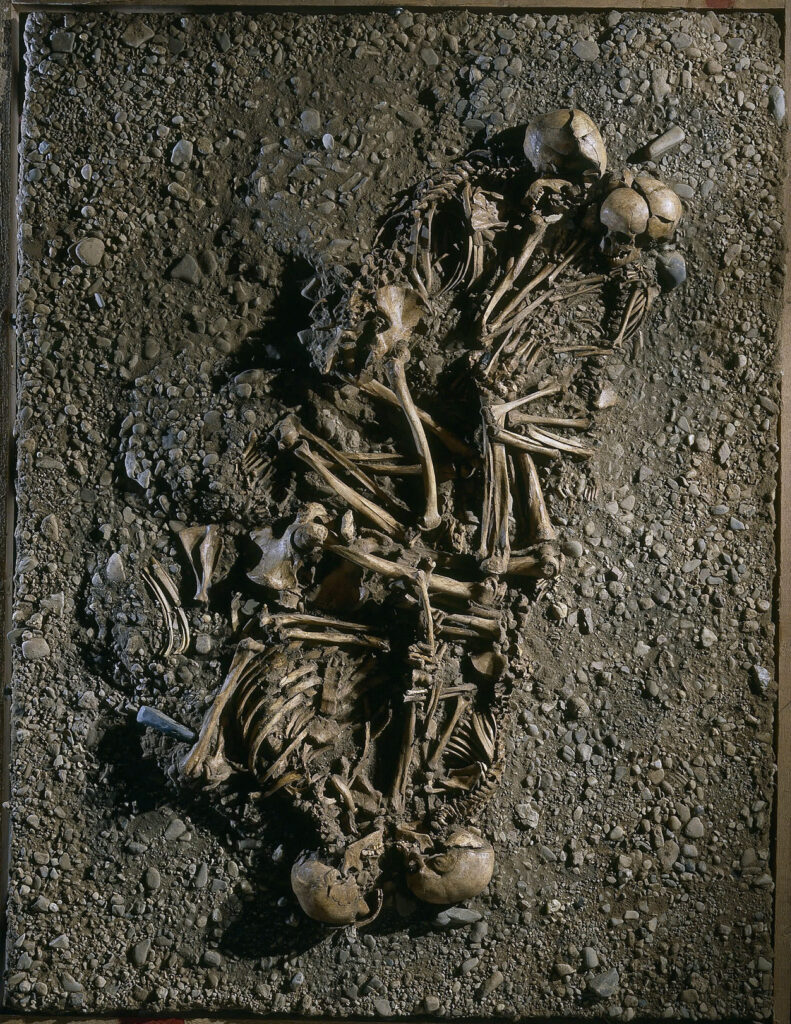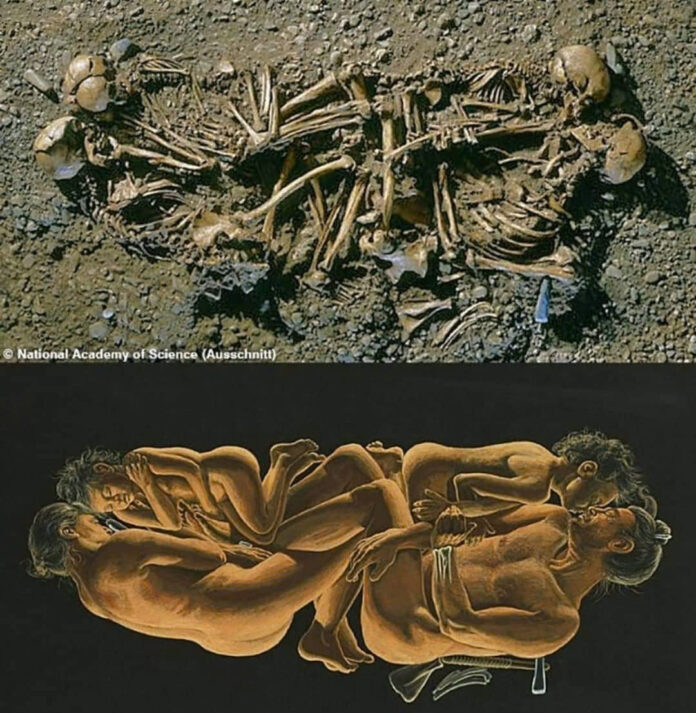In the rolling hills of Eulau, Germany, archaeologists uncovered a discovery that would challenge our understanding of ancient family structures. A 4,600-year-old grave site revealed not just ancient remains, but a profound human story that resonates across millennia.
A Window into Prehistoric Family Life

The nuclear family—parents and children living together as a primary social unit—is often considered a relatively modern social construct. However, the Eulau burial site provides compelling DNA evidence that this fundamental family structure existed as far back as the late Neolithic period. These findings offer us a rare glimpse into the social organization of our ancestors and the timeless nature of human bonds.
The Discovery: A Family Forever United
In 2005, archaeologists made a remarkable find: a grave containing four individuals positioned with extraordinary care. Genetic analysis later confirmed what the arrangement suggested—they were a biological family consisting of a father, mother, and their two young children. This discovery represents the earliest conclusively identified nuclear family in human history.

The family belonged to the Corded Ware Culture, a prehistoric group known for their distinctive pottery and early pastoral lifestyle across Central Europe. What makes this burial particularly moving is the deliberate arrangement of the bodies—each adult was positioned cradling one of the children, with the parents facing each other in what appears to be an eternal embrace. This tender positioning speaks volumes about the emotional connections that bound this prehistoric family.
Violent End: Ancient Warfare Frozen in Time
Signs of Conflict and Tragedy
The peaceful appearance of the burial belies a violent truth. Forensic analysis revealed that this family met a brutal end. The father and children showed evidence of skull fractures consistent with blunt force trauma, while arrowheads found embedded in some remains point to a coordinated attack.

This wasn’t an isolated incident. Other graves at the Eulau site contained similarly injured individuals, suggesting that the community fell victim to a violent raid—likely part of the territorial conflicts common among early human societies competing for land and resources.
The Aftermath: Love Amidst Loss
Perhaps most touching is the evidence that survivors returned to bury their dead. Despite the chaos and danger that must have followed such an attack, someone took the time to arrange these bodies with profound care and obvious emotional intent. The parents were positioned holding their children close—a final protective gesture frozen in time.

Other graves contained young children buried alone, suggesting they were orphaned in the attack. Archaeologists theorize that surviving women and children may have been taken as captives, a practice documented in many ancient conflicts.
Implications: What the Eulau Family Tells Us About Our Past
Confirmation of Ancient Family Structures

The genetic evidence from Eulau definitively proves that the nuclear family model was established by the late Neolithic period, challenging previous assumptions about when this social unit emerged. This family lived together, died together, and was memorialized together—a testament to the enduring importance of familial bonds.
The Reality of Prehistoric Violence
The violent deaths of the Eulau family remind us that conflict has been an unfortunate constant in human history. These findings provide tangible evidence of the territorial disputes and resource competitions that shaped early human societies.
Universal Human Emotions
Perhaps most significantly, the careful burial arrangement speaks to emotional aspects of humanity that transcend time. Grief, love, and the need to honor fallen family members appear to be as ancient as humanity itself.
A Timeless Human Story

While separated from us by nearly five millennia, the Eulau family tells a story that feels remarkably familiar. Their tragic end reflects the harsh realities of prehistoric life, yet their careful burial demonstrates that love, grief, and remembrance have always been fundamental to human experience.
This extraordinary archaeological find serves as a poignant reminder that despite vast differences in technology and social organization, the bonds of family have remained central to human existence throughout our history. In the faces of this ancient family, we can recognize something of ourselves—a connection that bridges thousands of years and reminds us of our shared humanity.

